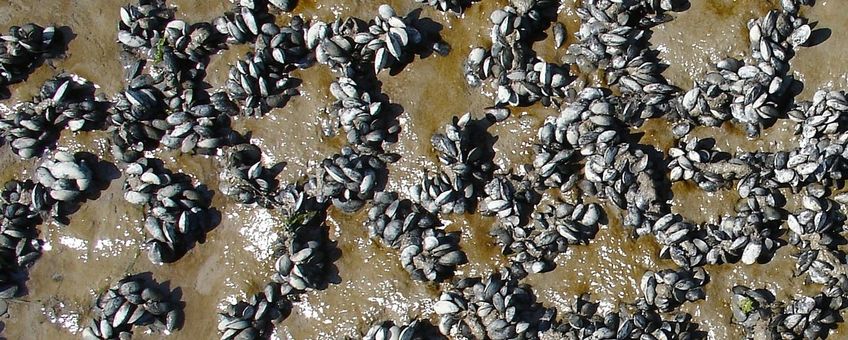
Patchwork pattern makes ecosystems strong as steel
NIOZ Royal Netherlands Institute for Sea ResearchThis is according to a study by an international team of ecologists, mathematicians and geoscientists led by NIOZ PhD student Koen Siteur in the leading scientific journal Proceedings of the National Academy of Sciences. These insights can help in the management of natural areas.
"We started with a model for patterns in seagrass beds," said Johan van de Koppel, professor of spatial ecology at the University of Groningen and working at NIOZ in Yerseke. "We modeled the emergence of patterns in seagrasses by describing the uptake of nutrients and sediment in seagrass vegetation. After all, concentration of nutrients and sediment in seagrass beds are important factors for seagrass growth. And what did we find? We saw that vegetation concentrates in a kind of patchwork pattern.”
From seaside sand dunes to the desert
Van de Koppel: " Soon we came to the conclusion that the model - in principle - could be applicable to a wide range of ecosystems: from nutrient-poor peatlands to grazed outer dike land (salt marshes) such as on Schiermonnikoog, from vegetated sand dunes on our coast to sand dunes in the desert."
Strong as steel

Analyzing the model was not easy. To do so, the researchers brought together an international team of ecologists, mathematicians and geo-environmental scientists. Together, they discovered that the processes of pattern formation in ecosystems that the model predicted gave similar results as the processes that make steel very strong. Steel is a mixture of iron and iron-carbide, among other things. By adding carbon to it in the molten state, both substances mix better and the steel becomes stronger. Patterns of alternating iron and iron carbide are formed during cooling. These patterns are well known - they are the patterns you see on "Valyrian steel," from the Game of Thrones series, or "Dasmascus steel" in the real world.
What was interesting was that these reinforcing processes also apply to ecosystems: when natural patterning occurs in ecosystems, they are more resistant to change than when this patchwork structure has been disrupted by humans and has gaps.

Looking at nature management differently
The results of this study have important implications for how we manage ecosystems such as estuaries and deltas. Or when we want to repair human damage to ecosystems. Van de Koppel: "Instead of trying to restore every square meter of damaged ecosystem, we need to look at restoration on a much larger scale. We shouldn't be looking at separate dunes or seagrass beds. But with these new insights, we can better identify which places in an ecosystem make more sense to restore than others."
More information
- The article Phase-separation physics underlies new theory for the resilience of patchy ecosystems was published in Proceedings of the National Academy of Sciences (PNAS) in January 2023. The authors are: Koen Siteur, Quan-Xing Liu, Vivi Rottschäfer, Tjisse van der Heide, Max Rietkerk, Arjen Doelman, Christoffer Boström and Johan van de Koppel.
Text: NIOZ
Photos: Jim van Belzen, NIOZ; Jasleen Kaur, Flickr; Maarten Appinga; Alamy Stock Photo
